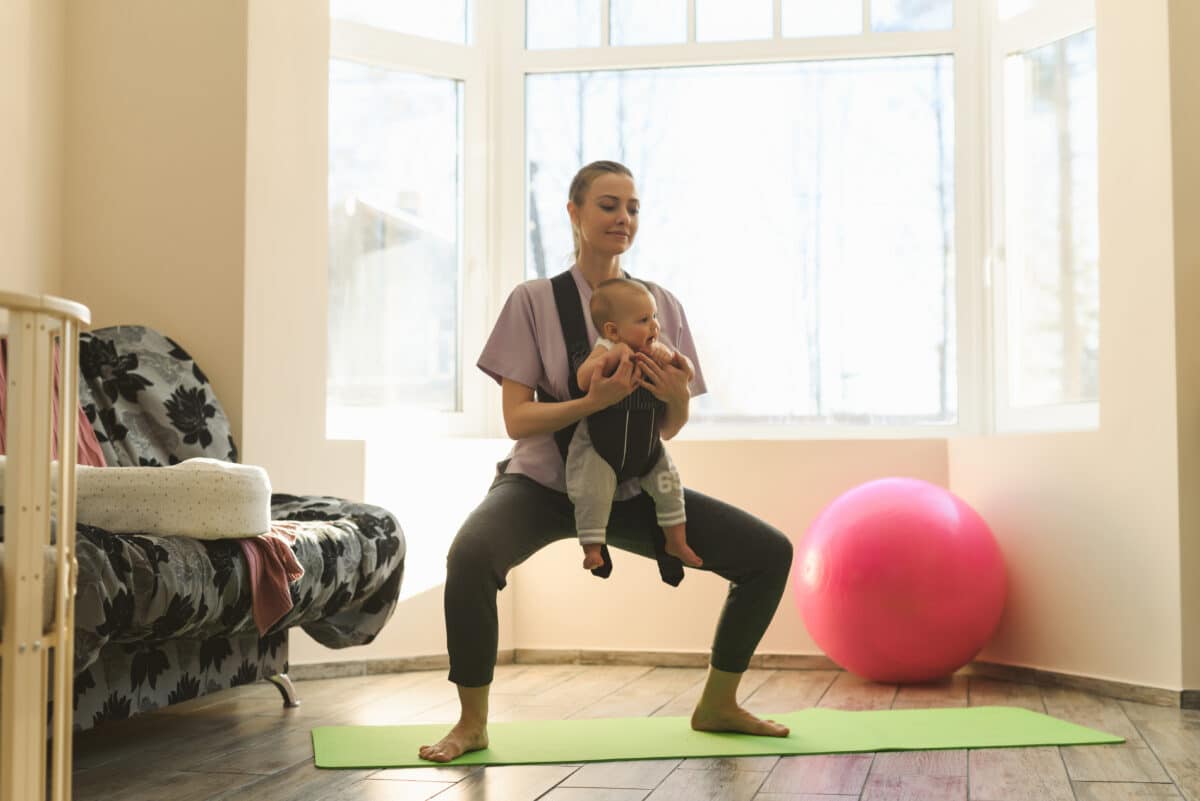
Abdominal seperation – are sit-ups harmful?
Date: 17/04/2024Have you recently given birth and are wondering if you can do sit-ups or if that could be harmful to your abdominal muscles? For years, women have been told to avoid sit-ups post partum, as it has been believed to worsen abdominal separation. But is that a fact?
First, what is abdominal separation?
All pregnant women will at the end of a pregnancy have abdominal separation. That’s because separation of the muscles is necessary to make room for the growing uterus and baby. The abdominal muscles can handle that separation, wouldn’t it be weird if the female body couldn’t? After birth, the muscles will return to normal in time. It might take weeks, and it might take up to a year. For a few women, they never fully return to normal. In other words, it’s normal and natural that your abdominal muscles will feel and look different for some time post partum.
Is abdominal separation in any way dangerous?
The vast majority of women won’t experience any difficulty due to abdominal separation, apart from the cosmetic part of it. Some may feel like they still look preganant, and the stomach might bulge into a pyramid-shaped pouch when they’re doing activities such as sit ups. Also, the abdominal muscles most likely feel weak compared to before pregnancy.
There isn’t any research that has found a clear correlation between a mild to moderate abdominal separation and pelvis pain or back pain. It isn’t harmful to exercise or be in physical activity when you have mild to moderate separation, and avoiding physical activity and exercise is actually more harmful.
A few women will have a more severe gap. A severe gap is anything more than 5 cm. There is very little reasearch on this group of women and there is limited knowledge on how that can affect pain and function. We don’t have any clear recommendation for these women, unfortunately.
Sit-ups for separated abdominal muscles
When you do sit-ups you can see the middle of your stomach bulging. You can’t seem to control the bulge or “Pull it back in” like you’ve been told to. Does that mean you need to avoid sit-ups?
For years, women were told to avoid sit-ups post partum, regardless of the size of their separation. In a new, Norwegian study, they found that sit-ups wasn’t harmful to women with separated abdominal muscles. Doing sit-ups didn’t give an increase in pain or dysfunction in the pelvic floor, pelvic girdle or back. On the contrary, it was effective in making the abdominal muscles bigger and stronger, which can be beneficial for women post-partum who experience weaker abdominal muscles than before.
With that said, the study also found that sit-ups didn’t affect the gap between the abdominal muscles at all. So while the gap doesn’t get bigger, it doesn’t get smaller either. There actually isn’t any good evidence to say that any exercise or activity will bring the abdominal muscles closer together. There is in fact very limited knowledge about the female body and exercise post-partum, so let’s coss our fingers more research and more answers is to come.
When doing sit-ups, you can actively work to reduce the size of your “bulging pyramid”. Try doing only the part of the sit-up where you can still control the bulge. Even if that menas you only lift one cm above the floor, that’s where you start. Try going further into the sit-up while still controlling the bulge every time you exercise. It might take a while, but in time you will get more control of the bulging.
So, what’s the take-away from this read?
Separated abdominal muscles are completely normal, and isn’t dangerous. In most cases, it’s not going to cause any issues, but for a few the distance between the muscles is very big. These women can have more trouble due to the separation. You might have difficulty or pain when performing certain activities. If you think that applies to you, you should seek out a physiotherapist with experience in womens health.
With the knowledge we have today, we can say that sit-ups aren’t harmful to women with abdominal separation. It won’t increase the gap (but it won’t decrease it either). It’s safe to exercise when you have separated abdominal muscles. Start from your level and build slowly. If you’re feeling uncertain how to, talk to a pjysiotherapist who can guide you.
You both can and should exercise. After a pregnancy, your muscles are most likely weaker and you’re in poorer shape then before. That could leave you in higher risk of developing pain and injuries. Exercise can help relieve and prevent pain from the pelvic girdle and from your back. Feeling stronger has a huge impact on your wellbeing, so don’t let split abdominal muscles stop you!
Referanser
- Gluppe S, Ellström Engh M, Bø K. Curl-up exercises improve abdominal muscle strength without worsening inter-recti distance in women with diastasis recti abdominis postpartum: a randomised controlled trial. J Physiother. 2023 Jul;69(3):160-167. doi: 10.1016/j.jphys.2023.05.017. Epub 2023 Jun 5. PMID: 37286390.
- Gluppe S, Ellström Engh M, Kari B. Women with diastasis recti abdominis might have weaker abdominal muscles and more abdominal pain, but no higher prevalence of pelvic floor disorders, low back and pelvic girdle pain than women without diastasis recti abdominis. Physiotherapy. 2021 Jun;111:57-65. doi: 10.1016/j.physio.2021.01.008. Epub 2021 Feb 13. PMID: 33691943.